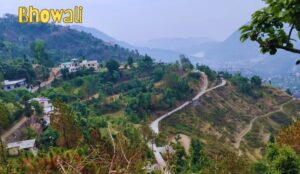In the cold desert of the Spiti Valley in Himachal Pradesh, Tabo Monastery is a beacon of Buddhist culture, history, and spirituality. Often referred to as the “Ajanta of the Himalayas” due to its ancient murals and exquisite artwork, Tabo Monastery stands as one of the oldest and most significant monasteries in India. Dating back over a thousand years, it is a place that holds historical and cultural importance, not just for India but for the entire Buddhist world. Let’s explore the remarkable history, unique architecture, and cultural significance of this sacred place.
A Glimpse into the History
Founded in 996 AD by the revered Buddhist scholar and translator Rinchen Zangpo, Tabo Monastery has withstood the test of time. It was built during the reign of Yeshe-Ö, the king of western Tibet, who aimed to spread Buddhist teachings across the region. His vision was to establish a monastery that would serve as a beacon of the Mahayana Buddhist tradition, offering spiritual guidance and wisdom to all who sought enlightenment.
Over the centuries, Tabo Monastery has seen its share of challenges, from natural wear and tear to invasions and political shifts in the region. Yet, it continues to stand tall as a testimony to the resilience of Buddhist teachings and Tibetan culture. Recognized for its historical value, Tabo Monastery is now under the protection of the Archaeological Survey of India, ensuring that its legacy endures for generations to come.
Architectural Brilliance and Structure
The architectural layout of Tabo Monastery is a fascinating blend of Indo-Tibetan artistry, showcasing the influence of both Buddhist and Indian aesthetics. Unlike the grand structures we often associate with monasteries, Tabo is modest in scale but rich in detail. The entire monastery complex is built with earthen walls and consists of several small temples, assembly halls, and living quarters for monks.
The main structures of Tabo Monastery include:
- The Main Temple (Tsuglhakhang): Also known as the ‘Assembly Hall,’ this is the heart of the monastery. The temple houses some of the most intricate and ancient murals in the world, depicting scenes from Buddha’s life, teachings, and the journey of the Bodhisattvas. The sculptures and statues within are crafted with remarkable detail, bringing alive the teachings of Mahayana Buddhism.
- Nine Temples: Tabo Monastery consists of nine temples, each with a unique significance and purpose. The Serkhang or the Golden Temple is one of the most revered temples within the complex. Adorned with vibrant murals and statues, it is said to have been built by Rinchen Zangpo himself, making it a historical and spiritual treasure.
- The Ancillary Buildings: Surrounding the temples are smaller stupas, caves, and meditation chambers. The stupas are significant as they house relics and holy manuscripts. The monks’ quarters are modest yet harmonious with the landscape, and the caves are used for meditation, offering a space for deep contemplation and connection with nature.
The Spiritual and Artistic Heritage
Tabo Monastery is celebrated for its artistry. The walls of the main temples are adorned with frescoes, murals, and Thangka paintings that are not only visually captivating but also spiritually meaningful. The artwork reflects the teachings of Buddhism, with depictions of Bodhisattvas, various deities, and symbolic representations of virtues like compassion, wisdom, and enlightenment.
One of the most mesmerizing elements of Tabo’s artistic heritage is the use of colors, pigments, and intricate designs that have withstood centuries. Artists used natural pigments derived from minerals, plants, and earth, making the monastery a masterpiece of sustainable and indigenous artistry. Each artwork serves as an educational tool, narrating stories of Buddha’s journey, teachings, and the ideals of compassion and renunciation.
The Role of Tabo Monastery in Tibetan Buddhism
Tabo Monastery is one of the oldest functioning Buddhist centers in the world and continues to be a major center for Buddhist learning, philosophy, and culture. It belongs to the Gelugpa sect, also known as the “Yellow Hat” school of Tibetan Buddhism. Over the centuries, it has served as a center of learning, attracting scholars, monks, and spiritual seekers from around the globe.
In Buddhist culture, Tabo is not just a place of worship; it is a “gompa,” or “teaching center.” It holds regular teachings, meditation sessions, and rituals that preserve the core values of Tibetan Buddhism. The monastery follows strict monastic traditions and is revered by the Buddhist community as a place where knowledge and wisdom are passed down through generations.
Festivals and Events at Tabo Monastery
The festivals celebrated at Tabo Monastery provide a glimpse into the rich cultural fabric of Tibetan Buddhism. One of the most notable events here is the Kalachakra ceremony, a grand ritual that is led by His Holiness the Dalai Lama. This ceremony, which is held only once every twelve years, attracts pilgrims and visitors from around the world. The Kalachakra is a complex Buddhist ritual that symbolizes the cyclical nature of life, aiming to promote peace and harmony.
During this event, the monastery becomes a lively and vibrant place filled with colors, music, and chanting. Monks create intricate sand mandalas that represent the universe, only to destroy them at the end as a lesson on the impermanence of life. For those seeking spiritual growth, attending the Kalachakra ceremony at Tabo Monastery is a transformative experience.
Apart from Kalachakra, other festivals like Losar (Tibetan New Year) and Buddha Jayanti are celebrated with fervor. These festivals are marked by traditional dance performances, prayers, and rituals that provide a window into the deep-rooted Buddhist traditions of Spiti Valley.
The Monastic Community and Daily Life
The monks residing in Tabo Monastery lead a life of simplicity, dedication, and introspection. Their daily routine is a blend of meditation, prayer, learning, and service. Each day begins before dawn with morning prayers, chanting of sacred texts, and meditation, fostering a strong spiritual connection.
Monks at Tabo are also dedicated to preserving ancient texts and manuscripts that hold the wisdom of Buddhism. Many of these texts are hand-copied in traditional Tibetan script, a practice that requires patience, focus, and reverence. The young novices are taught the importance of compassion, humility, and selflessness, embodying the principles of Buddhism through their lifestyle.
Tabo Monastery as a Cultural Heritage Site
The importance of Tabo Monastery goes beyond religion; it is a repository of art, culture, and history. Recognized by UNESCO as a site of cultural significance, it continues to draw the attention of art historians, researchers, and travelers alike. Efforts are being made to preserve the ancient frescoes and murals that are susceptible to damage due to natural elements.
Several organizations, including the Archaeological Survey of India, have undertaken preservation projects to ensure that Tabo Monastery remains an undisturbed monument of history and spirituality. The conservation efforts focus on preserving the integrity of the monastery’s architecture and artwork, ensuring that this historical gem can be admired by future generations.
The Journey to Tabo Monastery
Reaching Tabo Monastery requires some planning, as it is located in the remote Spiti Valley, a high-altitude desert region that experiences extreme weather conditions. There are two main routes to reach Tabo: from Manali or Shimla. Here’s a quick guide on the journey:
- From Manali: Travelers can take the route from Manali through the Rohtang Pass and Kunzum Pass, reaching Kaza, the district headquarters of Spiti. From Kaza, Tabo is a scenic drive away. However, this route is open only during summer, from June to September, as the passes are snow-covered in winter.
- From Shimla: This route is open throughout the year, but the journey is longer. The road from Shimla passes through Reckong Peo and Nako, winding through valleys and mountain passes before reaching Tabo.
The best time to visit Tabo Monastery is from May to October when the weather is mild and the roads are accessible. Winter brings heavy snowfall, making it difficult to access the monastery.
Spiritual Tourism and Responsible Travel
In recent years, Tabo Monastery has gained popularity among tourists and spiritual seekers who are drawn to its unique history and serene ambiance. While tourism contributes to the local economy, it also presents challenges to the delicate ecosystem of the region. Travelers are encouraged to follow responsible travel practices, respecting the monastery’s sanctity and preserving its surroundings.
Visitors are advised to be mindful of the rules and customs while visiting the monastery. Photography inside the main temple is restricted, as the light can damage the ancient murals. Additionally, silence and respectful behavior are expected to honor the sanctity of the place.
The Timeless Appeal of Tabo Monastery
Tabo Monastery is not just a destination; it is an experience of peace, spirituality, and timeless beauty. It embodies the spirit of Buddhism and serves as a living heritage of Himalayan culture. For many travelers and pilgrims, a visit to Tabo Monastery is a journey of self-discovery, a chance to step away from the chaos of the modern world and immerse in the serenity of the mountains.
Whether you are a history enthusiast, a spiritual seeker, or simply a traveler captivated by the beauty of Spiti, Tabo Monastery offers an unforgettable experience. Its walls, adorned with ancient stories and teachings, whisper the timeless message of Buddhism—a message of compassion, wisdom, and inner peace.
Nearby Places to Explore around Tabo Monastery
Dhankar Monastery
Dhankar Monastery is perched on a high cliff with panoramic views of the Spiti Valley. Built as a fort monastery, it offers spectacular landscapes and holds historical and religious significance. It’s a beautiful spot for photography and a great place to explore more of the region’s Buddhist culture.
Pin Valley National Park
Pin Valley National Park is a haven for nature enthusiasts. Known for its unique flora and fauna, the park is home to snow leopards, Himalayan ibex, and rare medicinal plants. The scenic beauty of the valley, with its snow-clad peaks and sprawling meadows, makes it a perfect destination for wildlife and photography lovers.
Kaza
Kaza is the main town in the Spiti Valley and serves as a hub for travelers. Here, you can visit the Sakya Tangyud Monastery, explore local markets, and find comfortable accommodations. Kaza is also a good starting point for trekking and exploring nearby villages like Langza and Hikkim, home to the world’s highest post office.
Kibber Village
Situated at a high altitude of 4,270 meters, Kibber is a unique Himalayan village known for its rugged beauty and traditional houses. Located about 70 kilometers from Tabo, Kibber offers scenic landscapes, and from here, you can trek to the Kibber Wildlife Sanctuary or the famous Chicham Bridge, one of the highest in Asia.
Gue Village and Mummy
Gue is known for its ancient mummy of a Tibetan monk, estimated to be over 500 years old. The village itself is quiet and scenic, offering visitors a chance to witness the preserved mummy and enjoy a glimpse into the mysterious aspects of Buddhist culture.
Conclusion
Tabo Monastery stands as a testament to the enduring strength of spirituality, culture, and history in the Himalayas. With its thousand-year-old walls echoing ancient teachings, it remains a sacred refuge for those who seek peace and enlightenment. Visiting Tabo is not just a journey to a physical destination; it is a journey into the depths of a rich and profound tradition that connects humanity across time.
FAQs about Tabo Monastery
Q1: What is the best time to visit Tabo Monastery?
The best time to visit Tabo Monastery is from May to October, when the roads are accessible, and the weather is pleasant. The route via Manali is open only in summer, while the Shimla route remains open throughout the year but can be challenging during winter.
Q2: Is photography allowed inside Tabo Monastery?
Photography is restricted inside the main temples of Tabo Monastery to protect the ancient murals and paintings. However, you can capture the exteriors and surrounding landscapes, which are breathtaking.
Q3: How long does it take to explore Tabo Monastery?
A thorough visit to Tabo Monastery can take about 2–3 hours, allowing enough time to explore the nine temples, view the murals, and soak in the spiritual ambiance. If you’re interested in meditation or exploring the nearby caves, you might want to spend additional time here.
Q4: Are there any accommodation options near Tabo Monastery?
Yes, several guesthouses, homestays, and small hotels are available in Tabo village and nearby Kaza. Local families run many accommodations, offering a warm and authentic experience. Some guesthouses provide basic amenities, making them ideal for travelers looking for a simple and peaceful stay.
Q5: What are the main festivals celebrated at Tabo Monastery?
The Kalachakra ceremony is the most significant event held at Tabo Monastery, usually once every twelve years and led by His Holiness the Dalai Lama. Other festivals celebrated here include Losar (Tibetan New Year) and Buddha Jayanti, both marked by prayers, traditional dances, and rituals.
Q6: How can one reach Tabo Monastery?
Tabo Monastery can be reached via two main routes. The summer route from Manali passes through Rohtang Pass and Kunzum Pass and is accessible from June to September. The Shimla route, passing through Reckong Peo, is open throughout the year but can be challenging during winter due to snow. Taxis and buses operate between key points, making the journey accessible for travelers.





